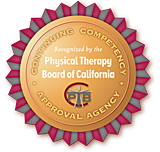
Learning The Method
MNRI® Reflex Integration for Newborns
Course Description
MNRI ® Reflex Integration for Newborns offers information on specific neurosensorimotor exercises for newborn infants of the first 0-10 days of life and during the next 0-28 days and till two months of life. In this MNRI® Program we call a Newborn baby a ‘TERRANAUT’ meaning that they are exploring the Earth condition and environment around - terrestrial attraction and gravity stress, air and dryness of the environment, light-darkness, visual objects with shapes, colors and movements, spectrum of sounds, and parents touch; and training their sensory-motor and motor genetically given patterns, and creating the ground for future neurodevelopment (axons, dendrites and synapses growth), emotional-behavioral and cognitive abilities similar to ‘an astronaut’ exploring the Earth-World and its qualities.
This course presents information important to the neurodevelopment and well-being of the child and mother-child relations based on the concept of reflex
integration. Each exercise proposed in this module explained, demonstrated and practiced during the course content.
Learner Objectives
Explain the Masgutova Neurosensorimotor Reflex Integration (MNRI®) Method’s role in primary reflex and its sensory, motor and central nervous system developmental mechanisms.
-
Describe the progression of primary survival and motor reflex patterns characteristics of a newborn age of 0-28 days and until 2months of life.
-
Explore the impact of birth or post-birth trauma on primary motor reflex patterns, the protective role immature reflexes play and the negative impact protection can have on an infant's neurodevelopment, physical and cognitive growth.
-
Explain levels of reflex maturity and why it is essential to support brain development through the application of basic reflex patterns at the newborn stage of life.
-
Explain the reasons why and in what way/s the basic reflex patterns can be used as a preventive tool for newborns who experienced birth stress and trauma or other developmental deficiencies.
-
Analyze how to support the newborn’s brain development during first days and months of development.
-
Describe how neurosensorimotor reflex integration provides a preventive tool for a newborn and young infant.
-
Describe how a Terronaut trains reflexes for creating neurophysiological basis for future cognitive processes.
-
Describe how to create and apply an individual MNRI® program for newborn and infants with various challenges.
-
Analyze information and techniques to support the Terrronauts, newborns, and infant’s successful reflex development.
-
Describe specific milestone stages and why they are classified into three categories: sensory-motor development, emotional interaction and emotional-social development.
-
Explain how the additional milestones such as sensory-motor integration and reflex maturation are important for the infant’s health, well-being, growth and development.
-
Describe how this program module and its specific exercises for newborn improve the growth and development of the Terronaut.
-
Describe how the following exercises for breathing, oral motor, Post-birth Protective and HPA stress-axis, Gross and Fine Sensory-Motor Reflexes, and Aqua Reflex facilitate growth, development and stress- resilience for a Newborn during 10 days, 28 days and till 2 months of life:
-
Under supervised attention demonstrate the modified reflex exercises for a newborn and young infant.
-
Explain how this module’s specific exercises for the newborn and young infant during the first 10 days of life offer a strong foundation for overall growth and development and life-long reflexes from primitive development to primary reflexes.
-
Demonstrate the modified reflex exercises for the newborn infant during the first 10 days of life.
-
Explain how the exercises in this MNRI® Program are grouped around the sensory milestones.
Agenda
16 hours
Hour 1: Primary Reflexes
Hour 2: Motor reflex patterns characteristics of the newborn age of 0-28 days up to 2 months of life
Hour 3: Impact of birth and/or post-birth trauma on primary motor reflex patterns
Hour 4: Levels of reflex maturity
Hour 5: Basic reflex patterns and birth stress
Hours 6-8: Newborn’s brain development
Hours 9-10: MNRI® program for newborn and infants with various challenges
Hours 11-12: Specific milestone stages and classification into three categories: sensory-motor development, emotional interaction and emotional-social development
Hours 13-16: Specific exercises for the newborn and young infant during the first 10 days of life




